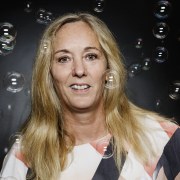Find this session's presentations here.
Designing for all may sound like an impossible task. As the world increasingly engages in conversations about the importance of diversity and inclusion, it is imperative that we, as important STEM organisations, join the conversation.
Are we being reflective about ourselves as STEM educators? About our institutions as promoters of STEM education and inquiry? Are we creating welcoming spaces for a wide variety of STEM learners? Are we being innovative about how we can expand our accessibility and inclusivity?
Or… are we, implicitly or explicitly, inviting and engaging only certain types of learners in certain types of contexts? And if so, can we broaden the scope of our activities to encompass the diversity of potential STEM learners required in the Europe of the future?
Let's learn from each other so we can adapt and expand our offerings to engage and motivate more of our visitors as well as reach a more diverse group of visitors.




